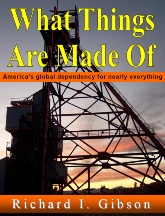
Some interesting oil industry statistics - petroleum basics
©1997-2009 Gibson Consulting
Index
US imports - from where?
US imports - volume
US exports
Largest exporters
Largest importers
Iraq
By company
Leading countries
US Production
Leading US States
Largest world oil fields
Largest US oil fields
Largest world gas fields
US Production Peak
Production Peak
Number of wells
US - Wells drilled/producing
US - shut-in wells
How many gallons?
How much gasoline?
How much plastic?
Production costs
Finding costs
US Gov't profits
Uses of oil
World
US
US - Bakken
US - shut-in wells
Peak Oil
Drill Baby Drill
Largest world oil fields
Largest US oil fields
Largest world gas fields
Who sets the price?
Price history
Factors
Why so high?
Gasoline price breakdown
Historic change in pricing basis

